2022-23 Antarctica Expedition
We revisited Allan Hills Blue Ice Areas, where previously ice as old as 2.7 million years was found, to get even more ice, and this time, we are bringing a BIG drill!

Allan Hills I-165 crew with the first ice core drilled in 2022 season
(Back row, left to right) Sarah Shackleton, Jacob Morgan, Yuzhen Yan
(Mid row) Jonathan Hayden, Julia M. Peterson, Mike Jayred, Elizabeth Morton
(Front row) Austin Carter
2015-16 Antarctica Expedition
We went to Allan Hills to hunt for ice older than 800 thousand years, which is the current limit of deep ice cores from Antarctica. To our surprise, the oldest sample turns out to be more than 2 million years old! This result, first reported in Goldschmidt Conference 2017 in Paris, was selected by Science as Top 10 in "2017 Breakthrough of the Year".
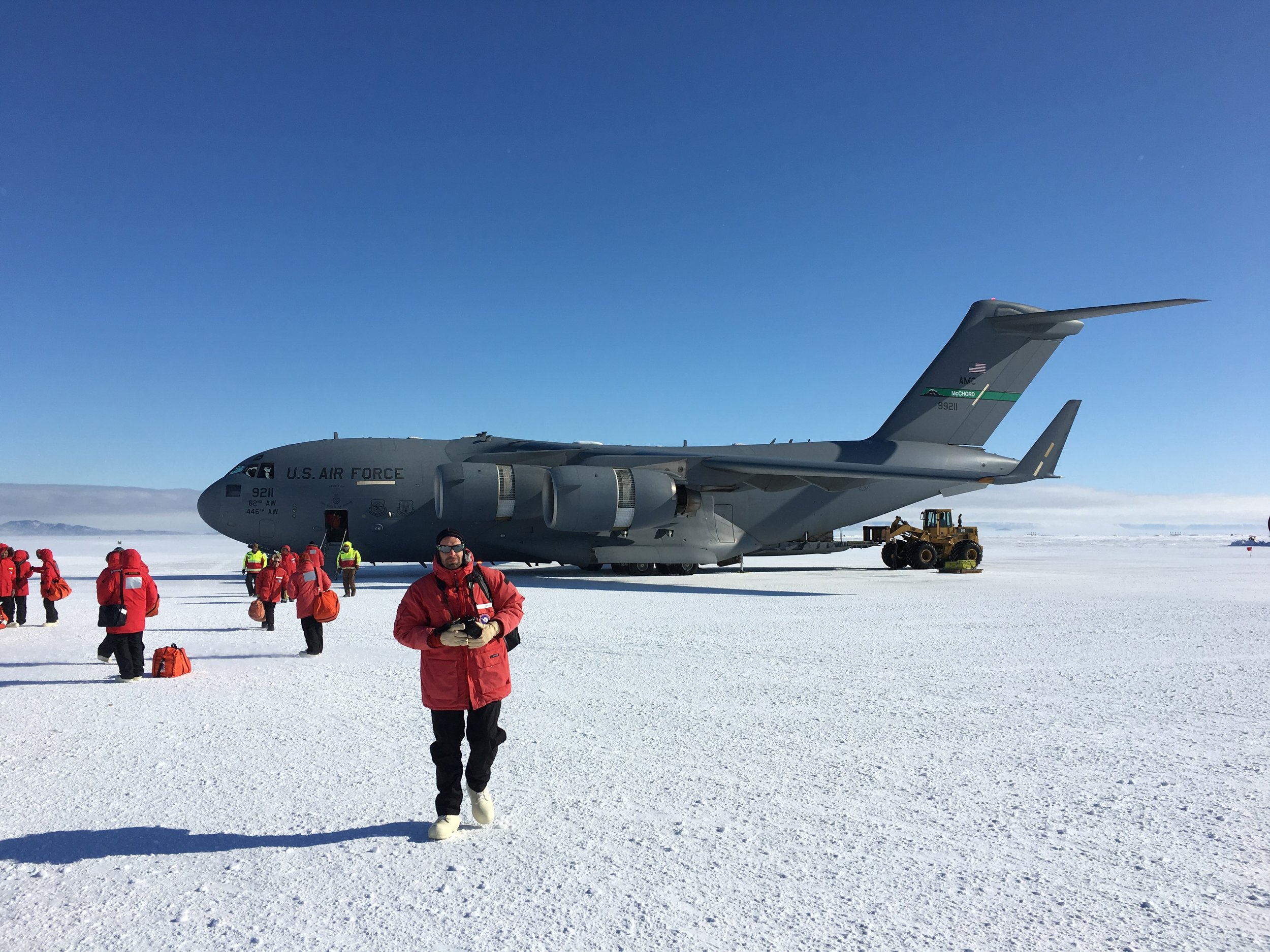
We flew from Christchurch, New Zealand on a C17 “Globemaster” capable of landing on ice (!)
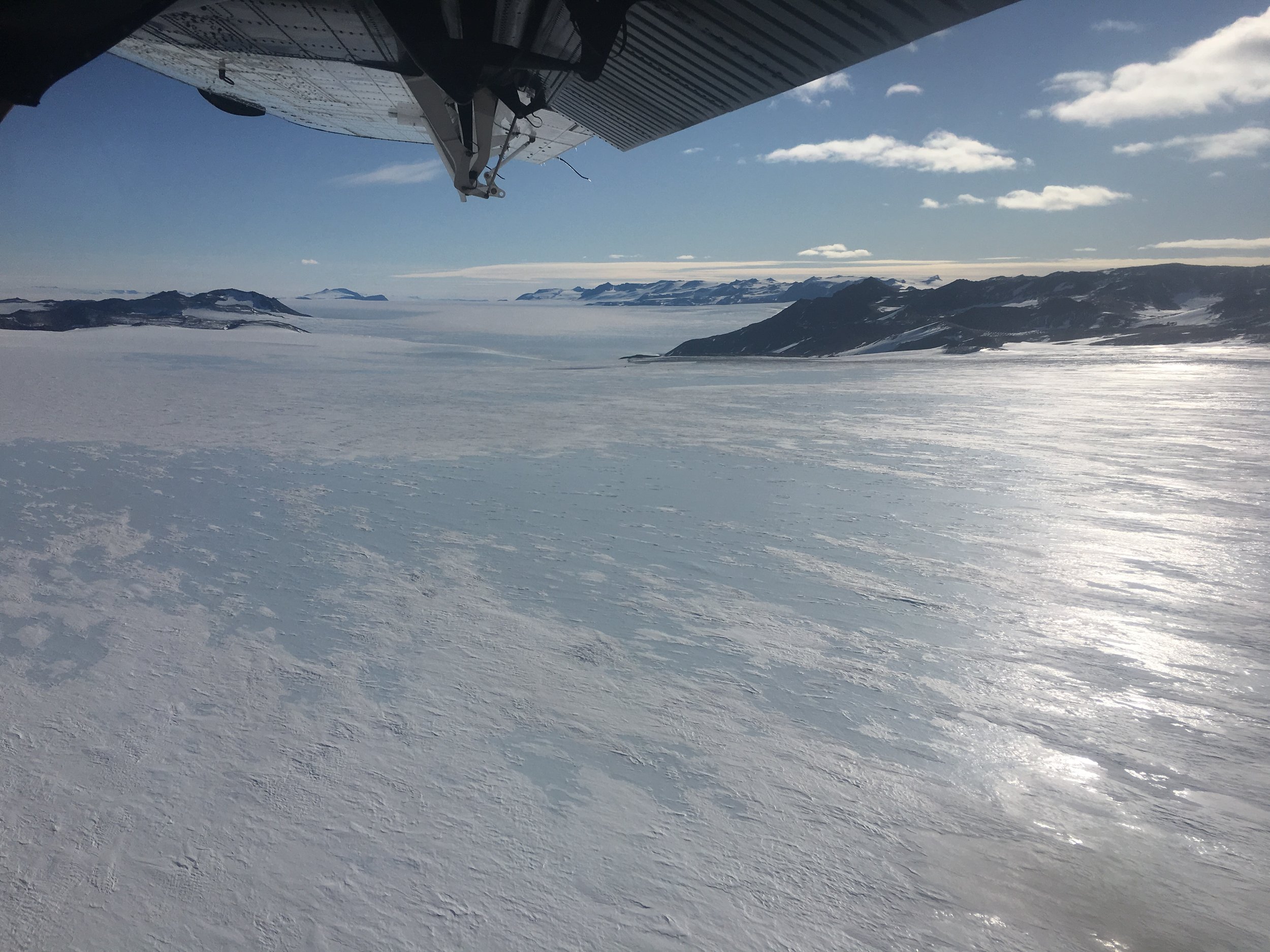
After spending a week at McMurdo for safety training, we embarked on our 7-week journey to Allan Hills Blue Ice Areas …
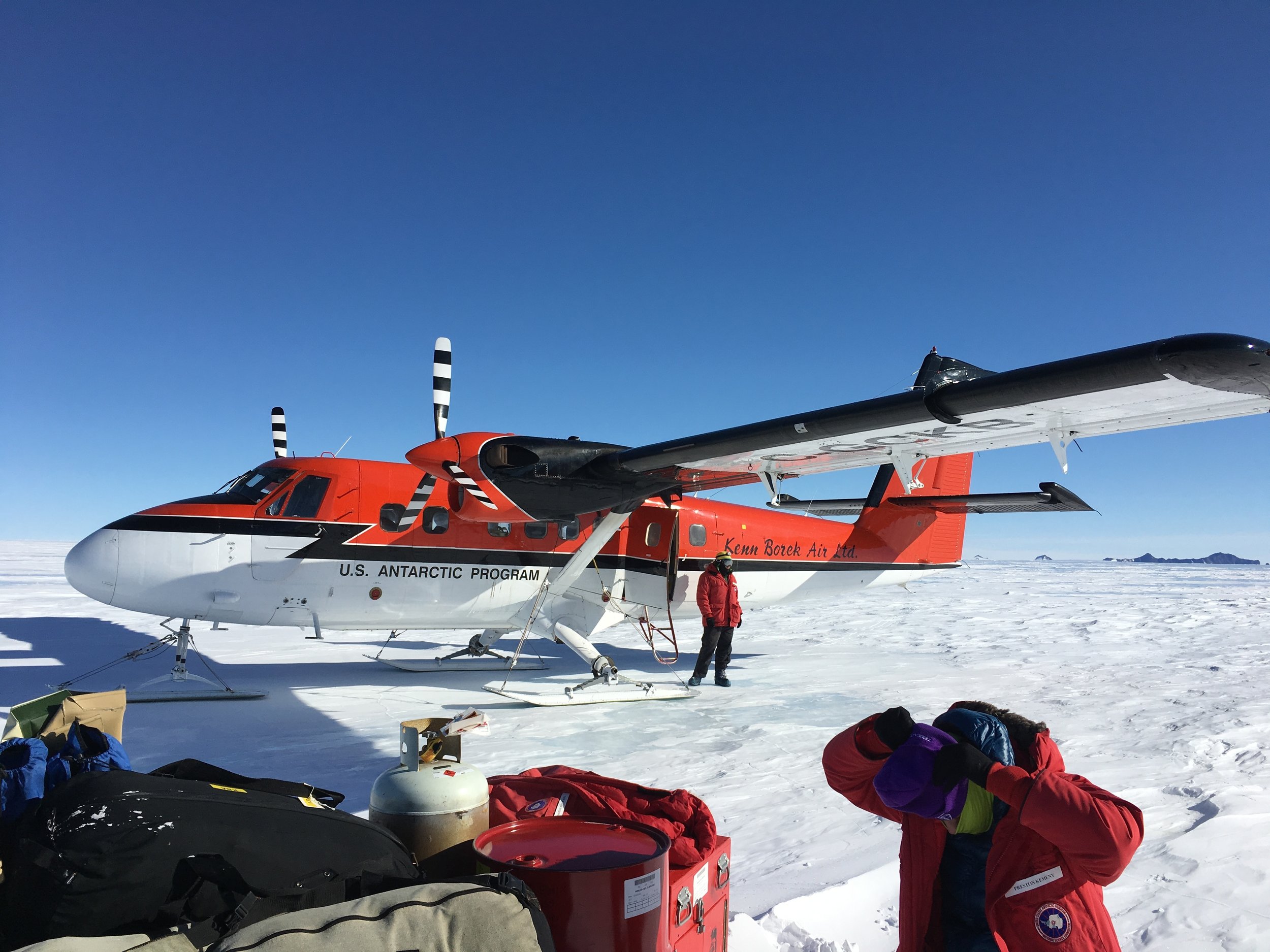
Upon landing in the field, we immediately began to establish a camp, our little home thousands of miles away from home.
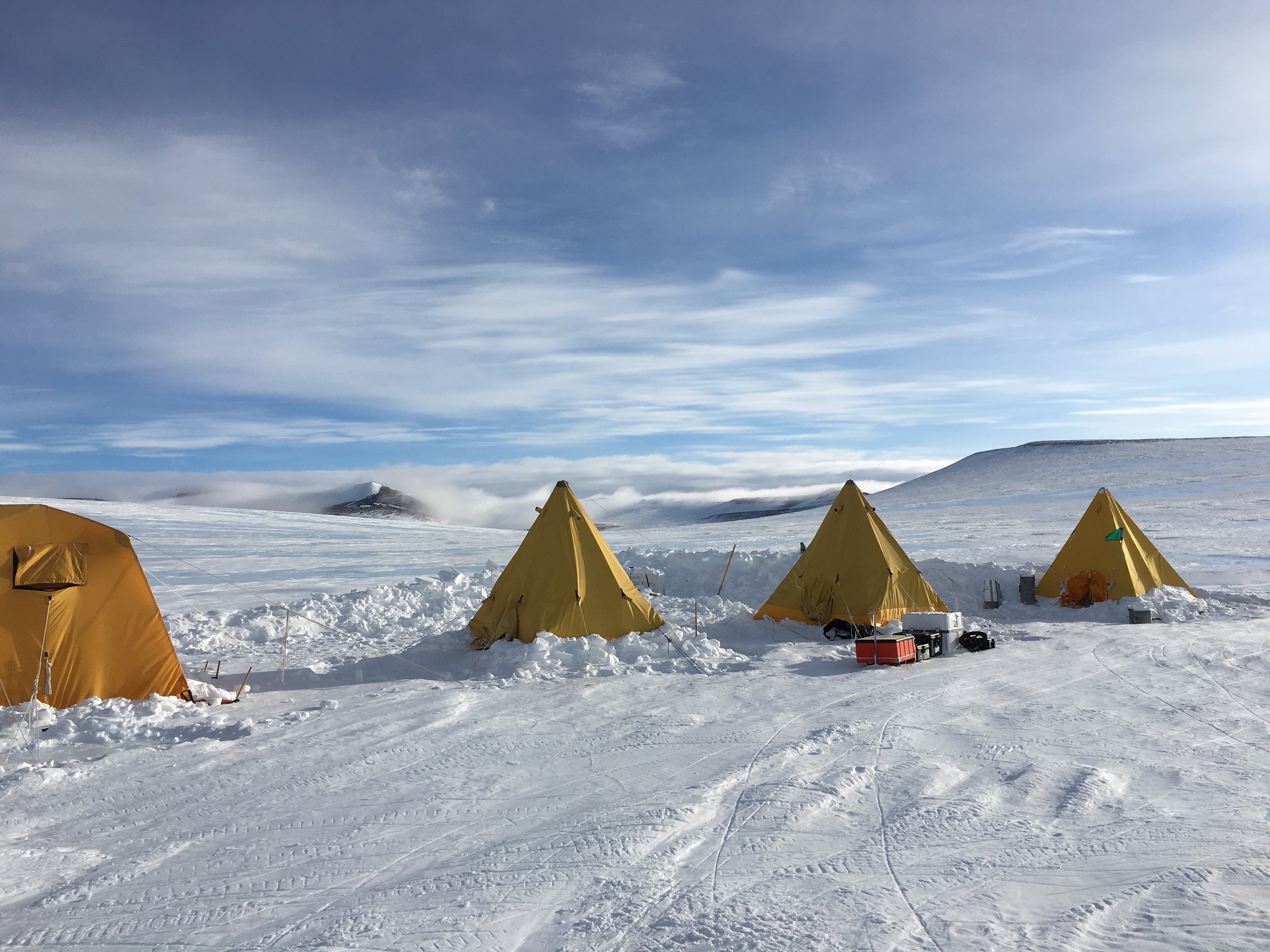
Those little pyramids are our living room (except the last one, which is the restroom).
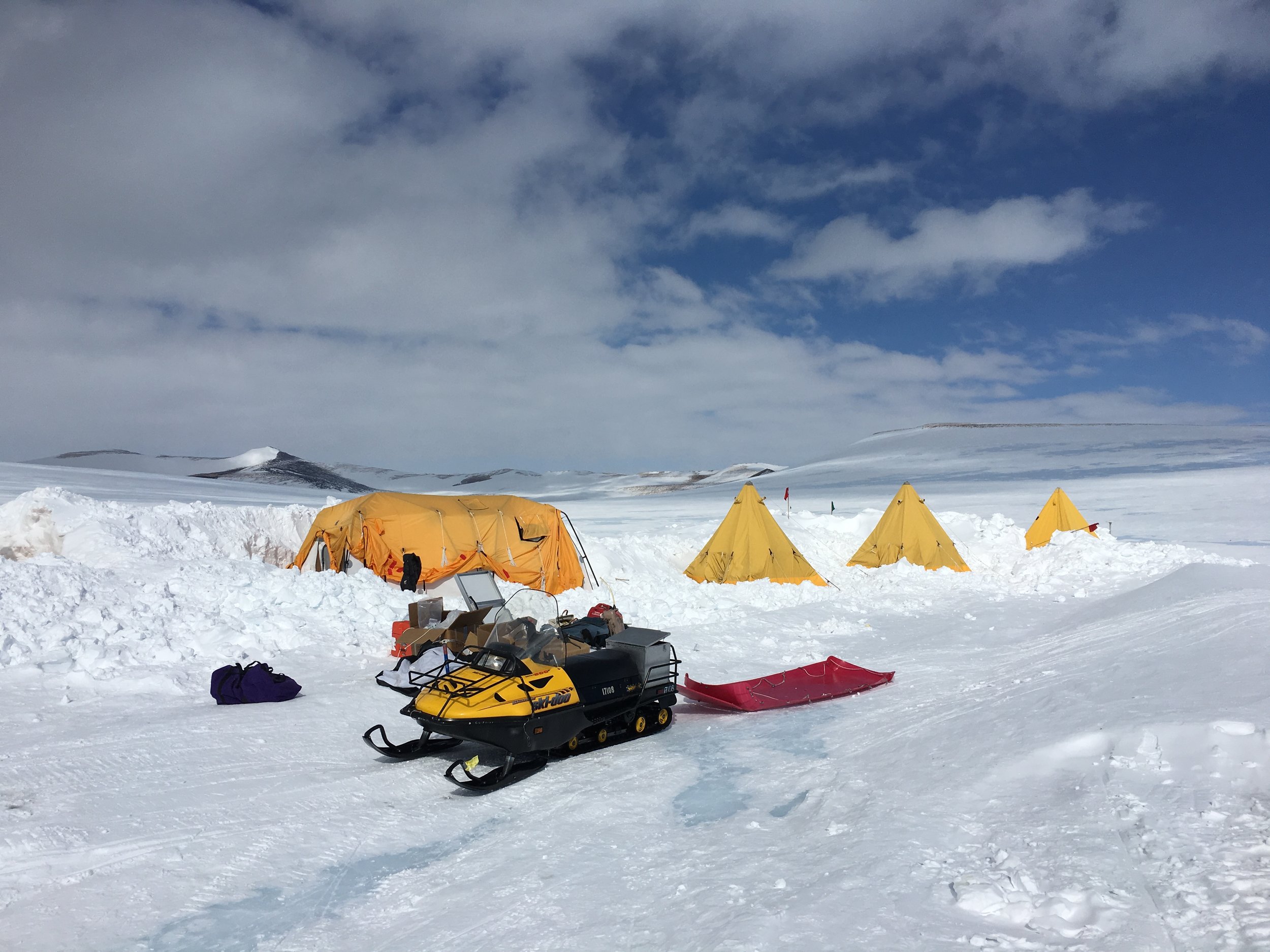
During the middle of the field season, we got hit hard by a major Antarctic storm. See the pile of snow behind the tents? That’s the power of nature.
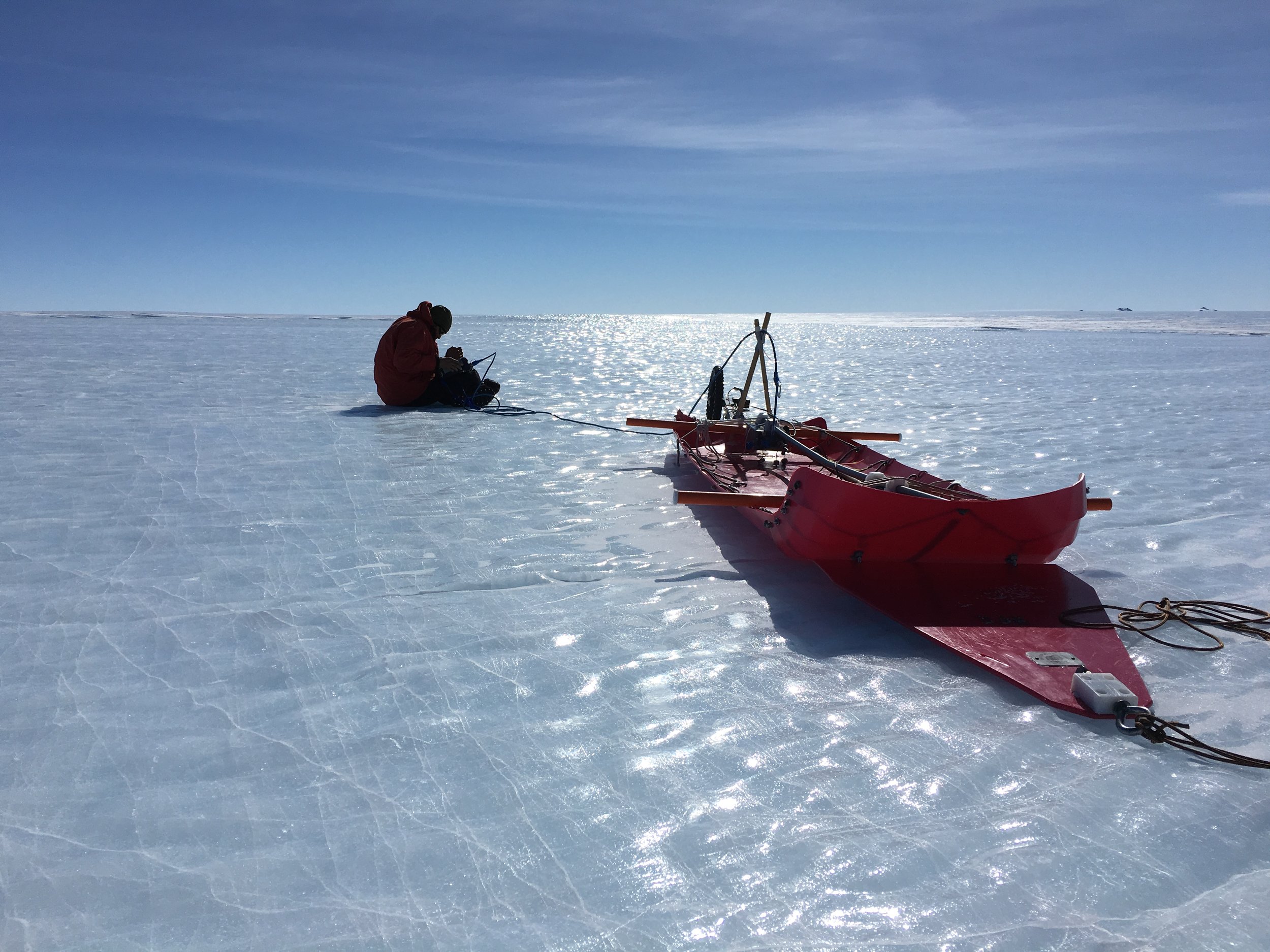
Here, Dr. Sean Mackay is doing GPR survey and attempting to measure the ice thickness. The goal is to locate the next drilling site where old ice could be found.
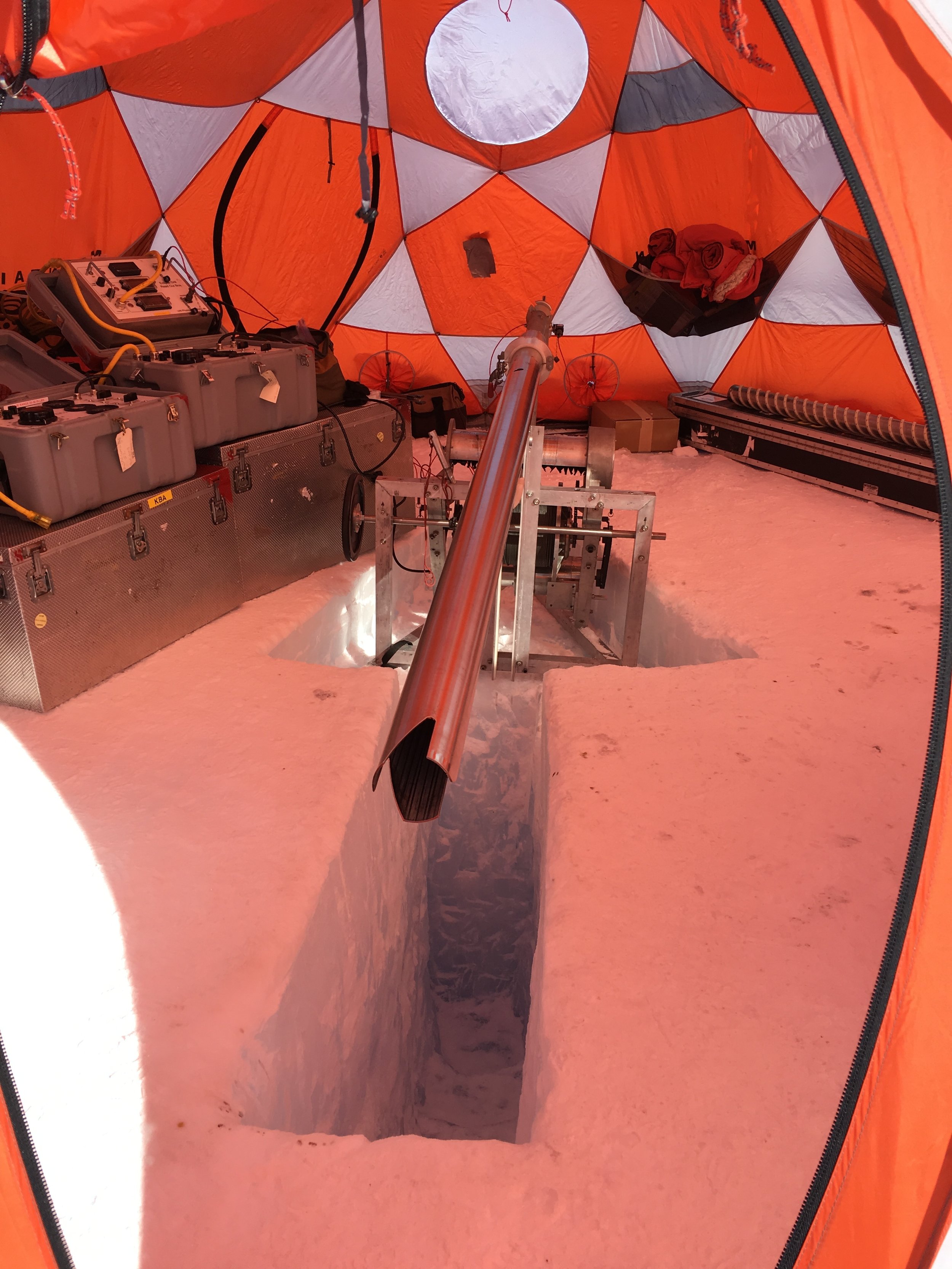
We spent two full days to set up the drill tent and the drill, including dig out this little trench.
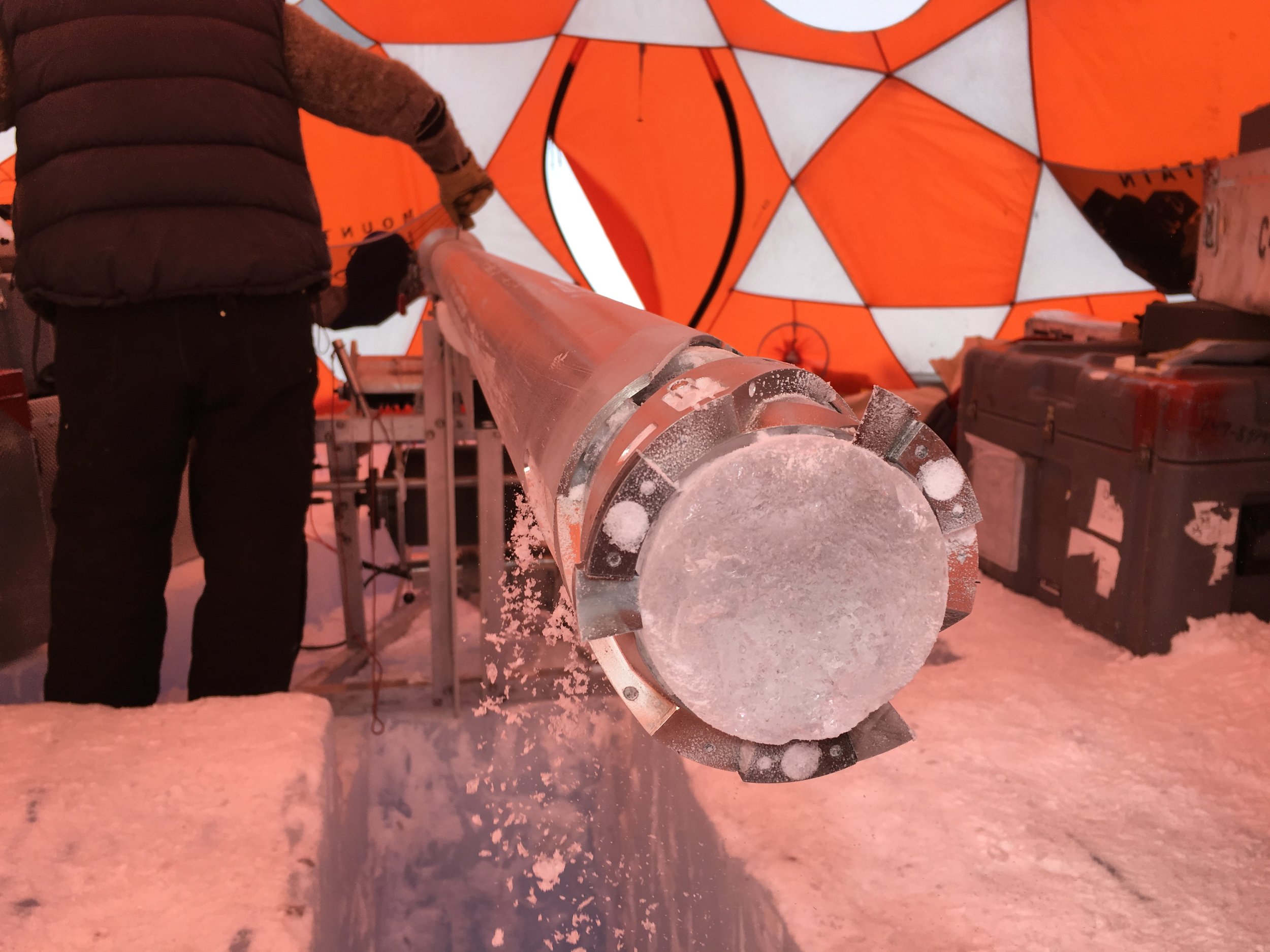
A freshly drilled ice core, in a barrel. We used a three-inch drill that is optimized for mobility and efficiency.
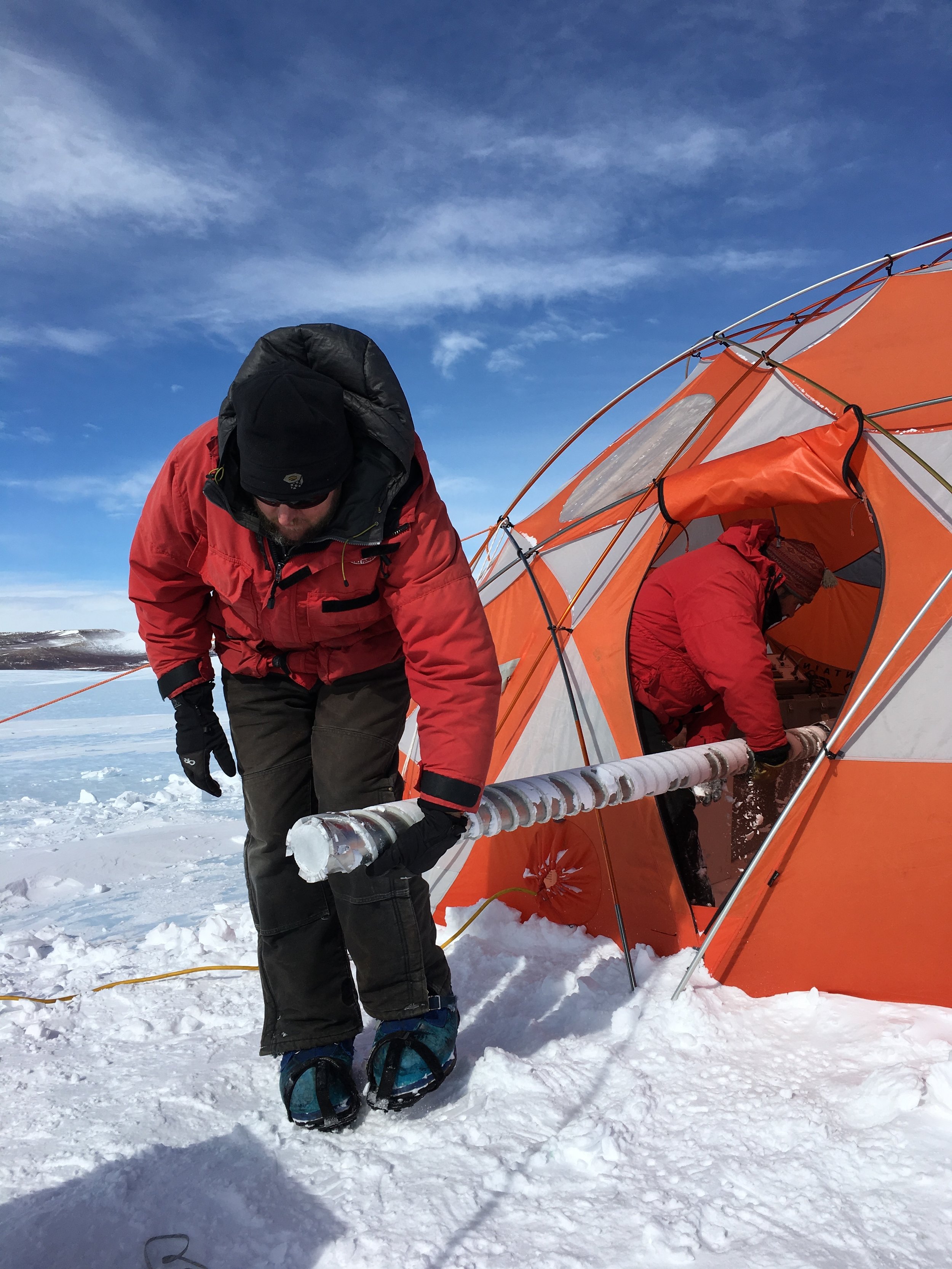
Dr. John Higgins (left) and Mike Waszkiewicz (right) holding the drill barrel that carries the cylindrical core.
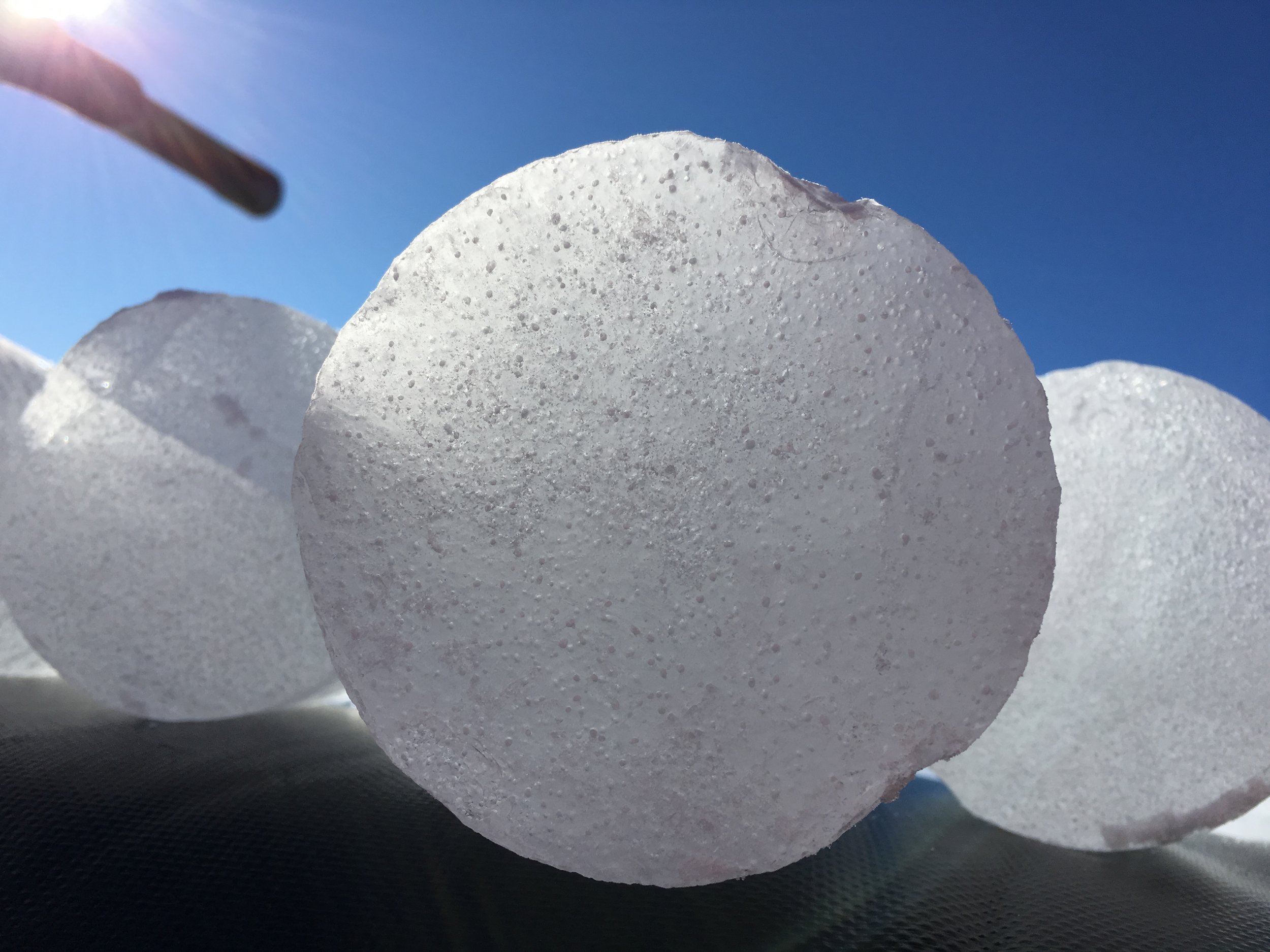
Our very first batch of ice cores drilled in the entire field season.
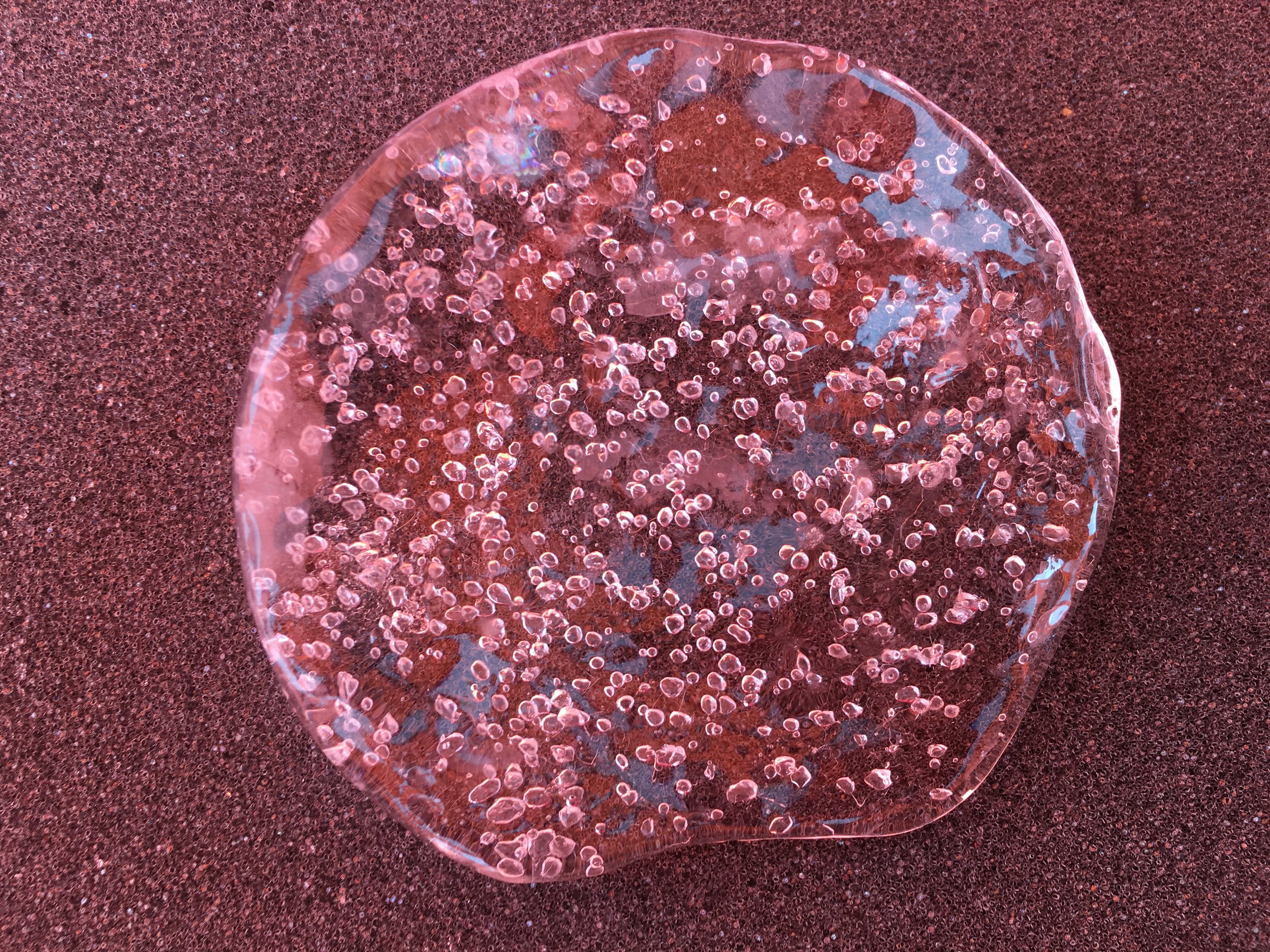
Inside the ice are air bubbles that are hundreds of thousand years (more precisely speaking, 300 to 500 ka).
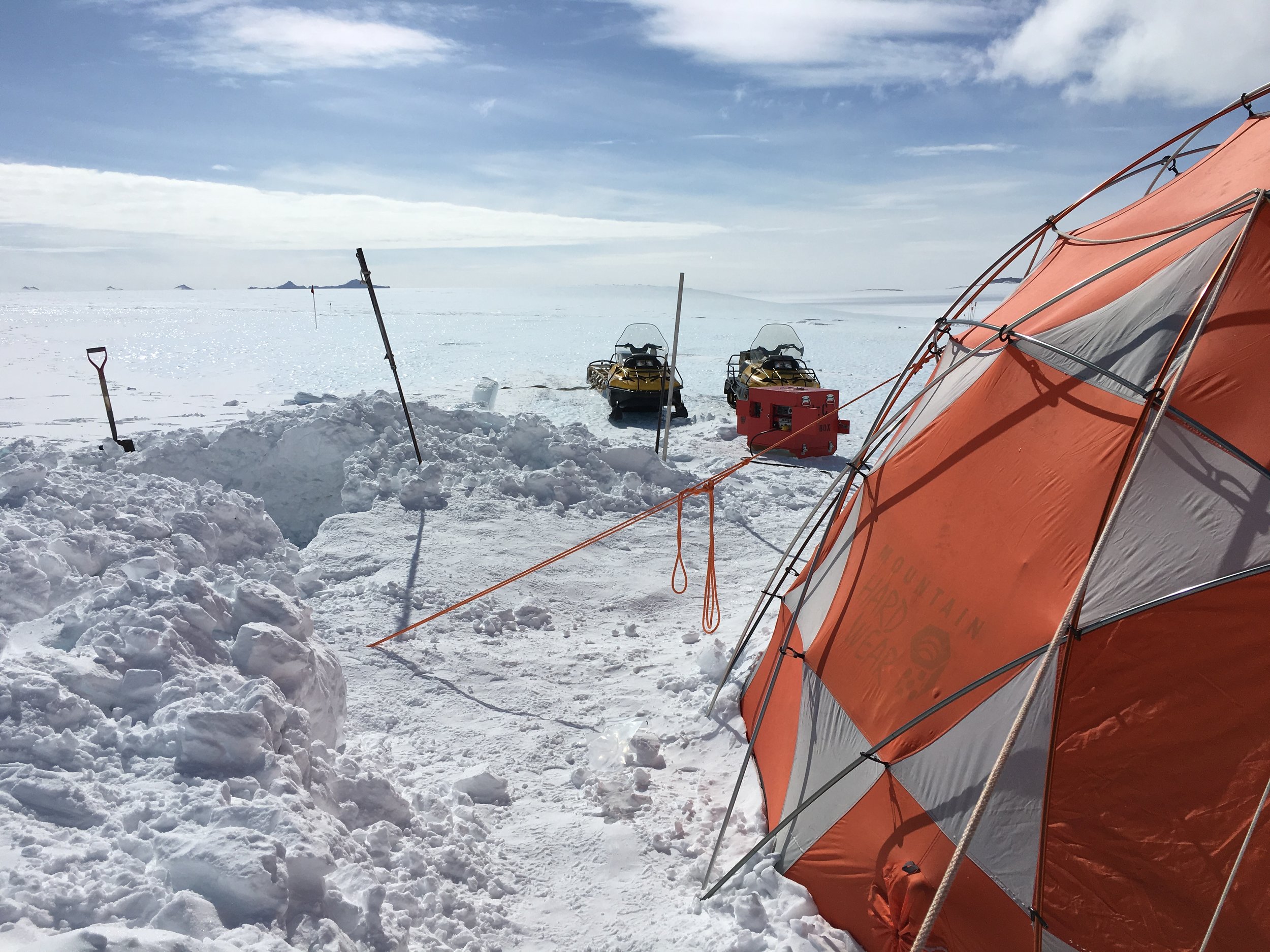
The drill is powered by a 5 kW generator located outside the tent. Also shown are two skidoos, our primary means of transportation in the field.
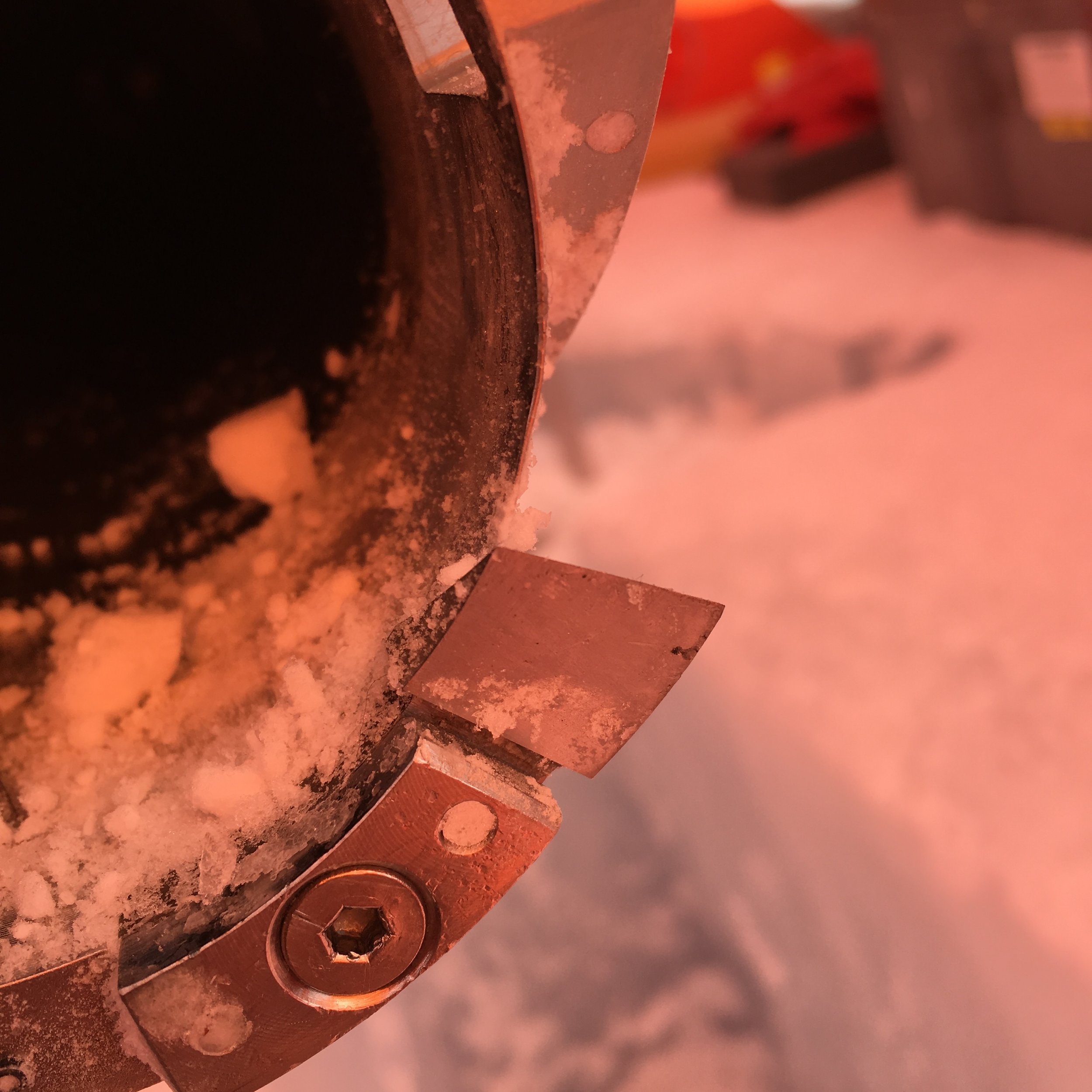
We knew the we’ve exhausted all the ice from the borehole because of the damage to the drill bits (R.I.P.). Time to move on to the next site!
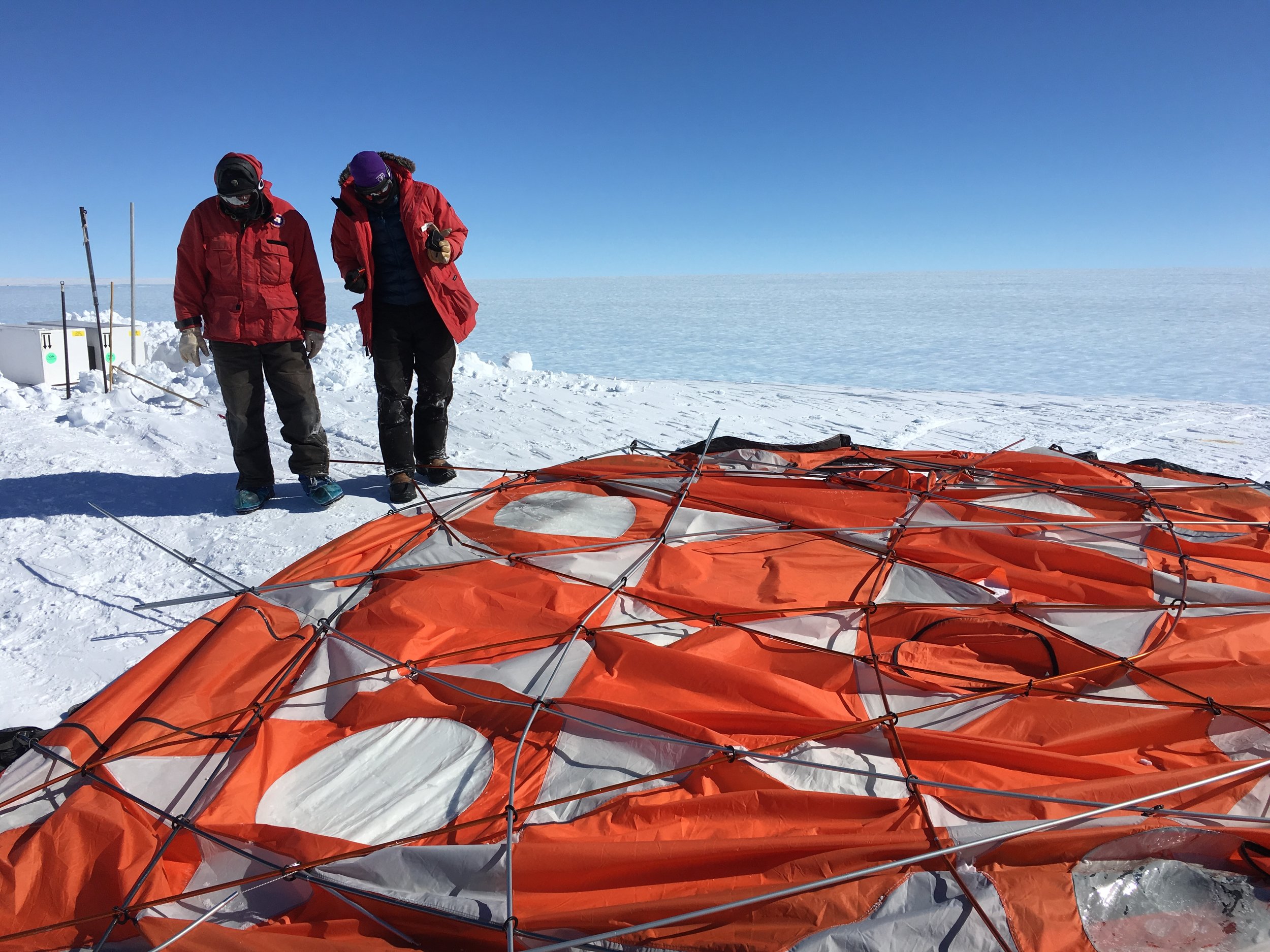
Once we finished all the drilling, the drill tent was struck down. Here John Higgins (left) and Preston Kemeny (right) are examining the poles and fabrics.
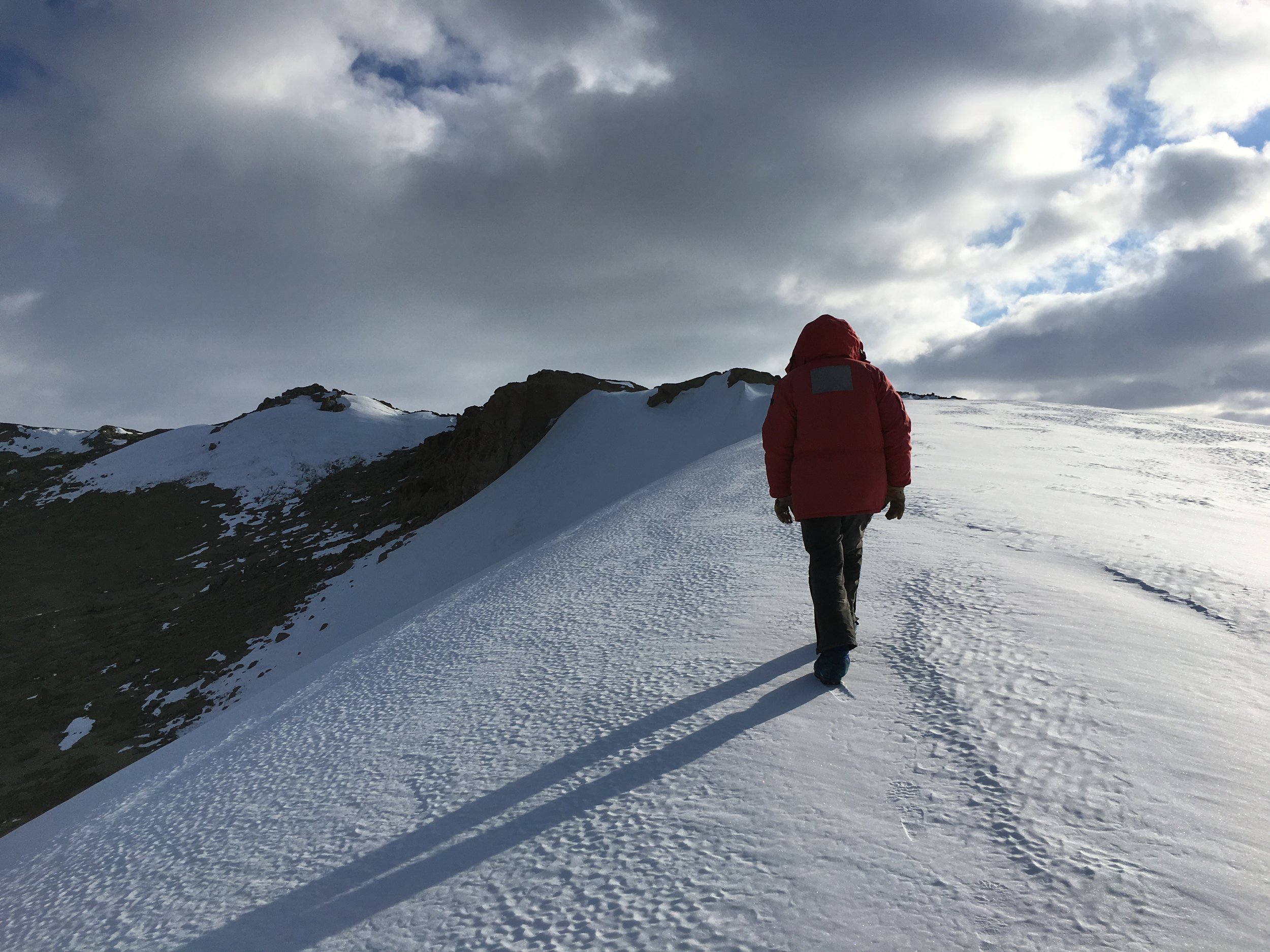
While life in Antarctica is in general quite boring, we managed to have some fun in the great outdoor.
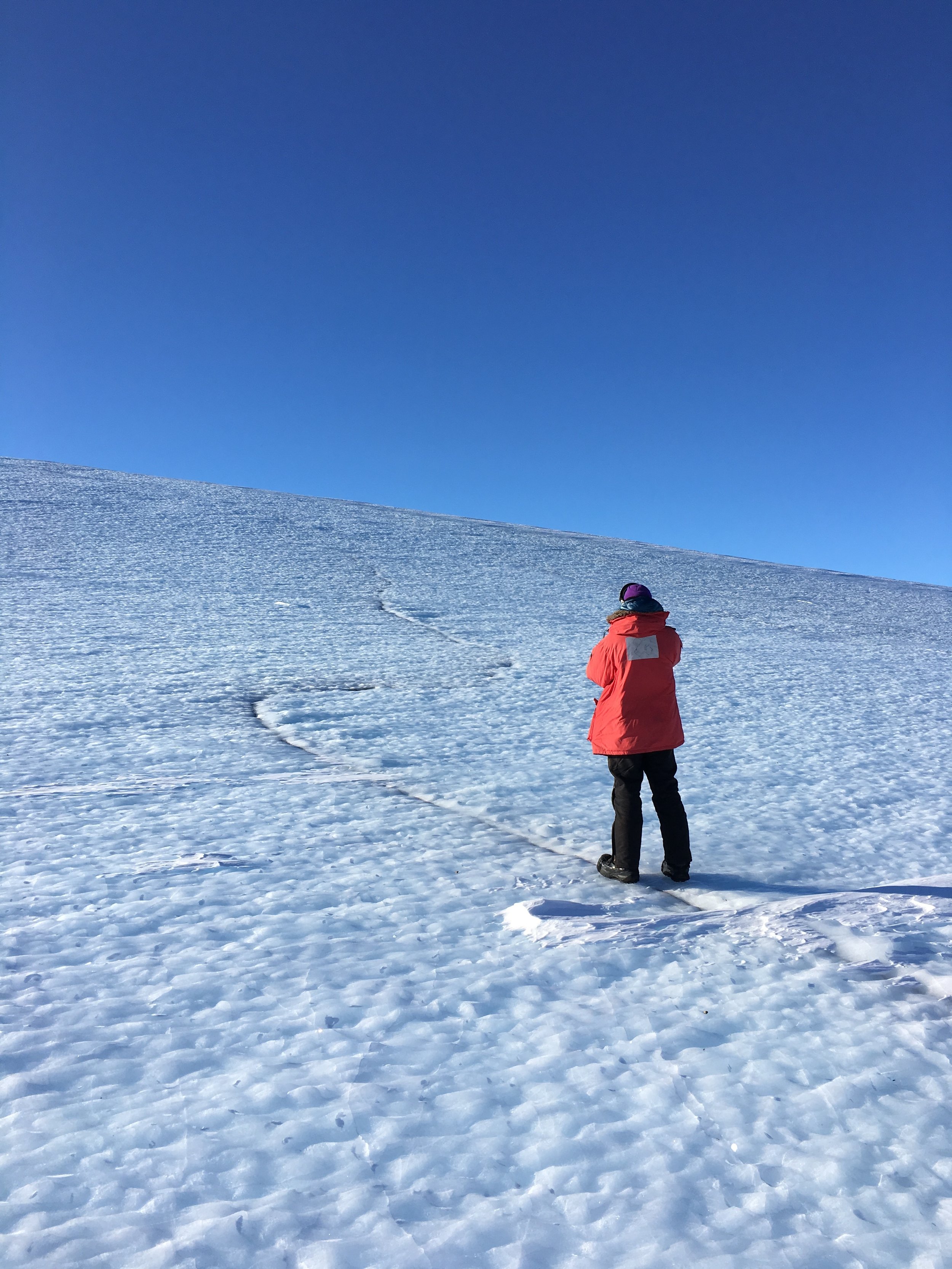
Ice in Allan Hills is constantly flowing. The curved line (actually a tephra layer) here demonstrates the differential flow of the ice.
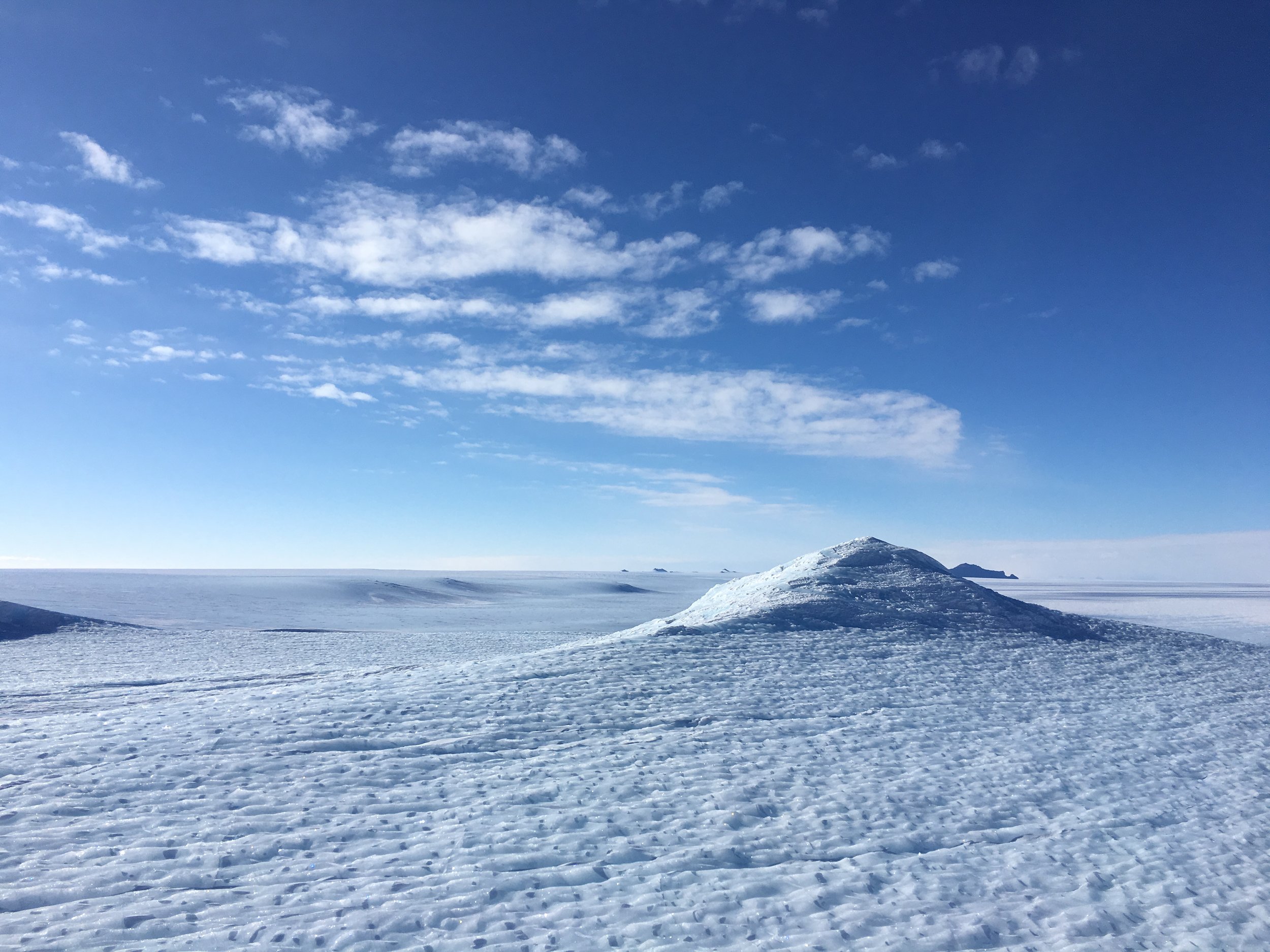
Because of the bedrock topography, the surface of the Allan Hills Blue Ice Areas is not flat. Instead, interesting features like this are common throughout the area.













